The Great Flood and Noah's Ark
Scott Cai
September 4, 2024
[New Sancai Compilation and First Release] The Bible records the story of the Great Flood and Noah’s Ark in the chapter of Genesis. This is one of the most dramatic and significant miracles in the Bible. It emphasizes God's judgment on a sinful world and His demonstration of God's power, justice, and grace through His mercy toward Noah and his family. And Noah is introduced as a righteous man who has found favor with God.
flood background
The growing evil of mankind. This widespread sin grieves God and causes Him to regret creating human beings.
God's Judgment and Building the Ark
God intended to use the flood as a means to destroy all flesh and blood as violence and corruption filled the earth. In preparation for what was to come, God instructed Noah to build an ark, providing specific dimensions and construction instructions. The ark will be made of gopher wood and sealed with asphalt inside and out to ensure its buoyancy and durability.
The dimensions of the ark are important: it was 300 cubits long, 50 cubits wide, and 30 cubits high, which equates to approximately 450 feet long, 75 feet wide, and 45 feet high. This massive ark was designed to house Noah, his family, and representatives of all living things. The three levels of the ark, with its rooms and a window, indicate careful planning for the survival and livelihood of its inhabitants.
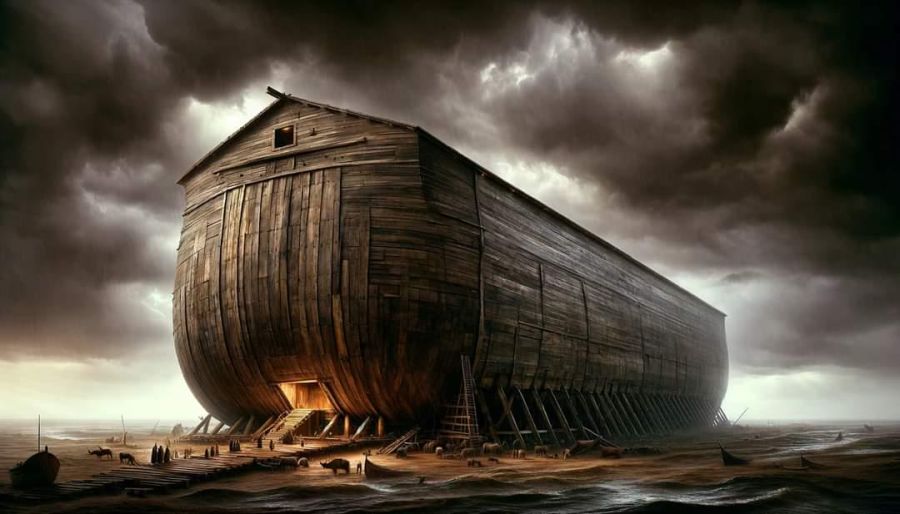
Promise with Noah
God commanded Noah to bring all kinds of animals, both male and female, into the ark in pairs to protect their species. Additionally, God instructed Noah to gather enough food for his family and animals.
Noah did exactly what God told him to do.
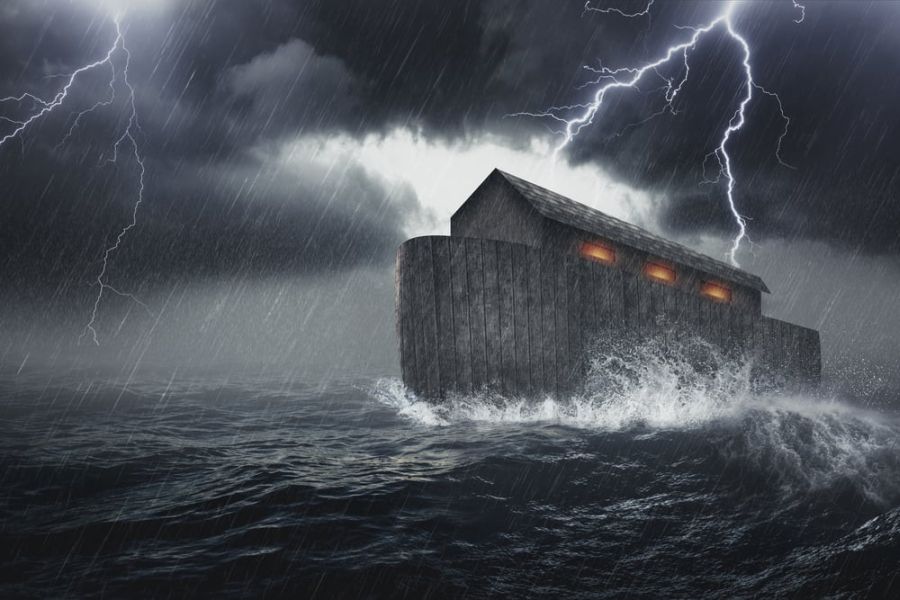
The beginning of the great flood
Sure enough, the flood began. Noah, his family, and the animals entered the ark, and God Himself closed the door and sealed them inside. The rain began to fall, and “the fountains of the great deep were burst open, and the windows of heaven were opened” (Genesis 7:11). Dual sources of water, coming from above and below, resulted in floods that covered the entire earth.
The floods continued to rise for forty days and forty nights, covering even the highest mountains to a depth of fifteen cubits (about 22 feet) higher than the peaks. This great flood clearly demonstrated the great power of God and the seriousness of His judgment. All living things outside the ark perished, highlighting the extent of the destruction and the justice of God's judgment.
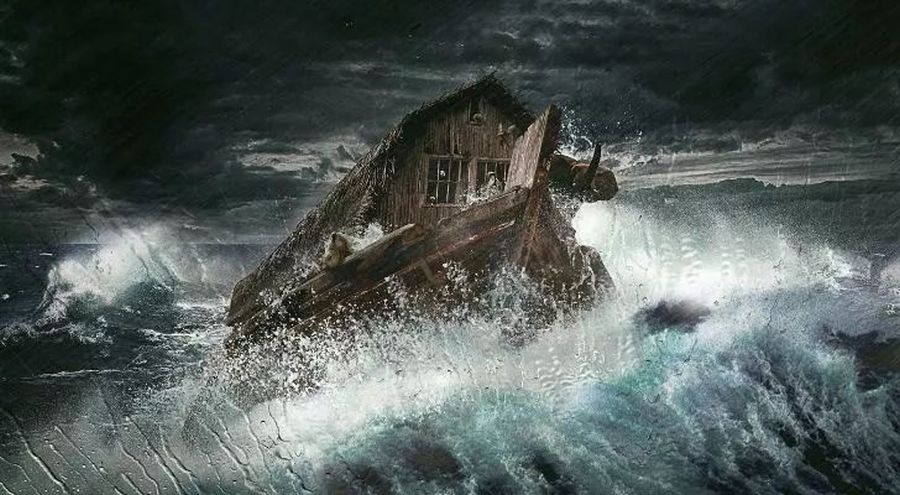
Life in the Ark is Protected
As the floods raged outside the ark, the ark remained a refuge for Noah, his family, and the animals. The Ark was built according to God's orders, ensuring that it would remain stable and buoyant in rough waters. Noah, his family, and the animals lived in the ark for a total of 150 days before the floodwaters began to recede.
During this time, God’s faithfulness was evident as He “remembered” Noah and all the inhabitants of the ark. The word “remember” indicates God’s ongoing care and commitment to His covenant with Noah. This reminds us that even in the midst of judgment, God provides a way of salvation for those who remain faithful to Him.
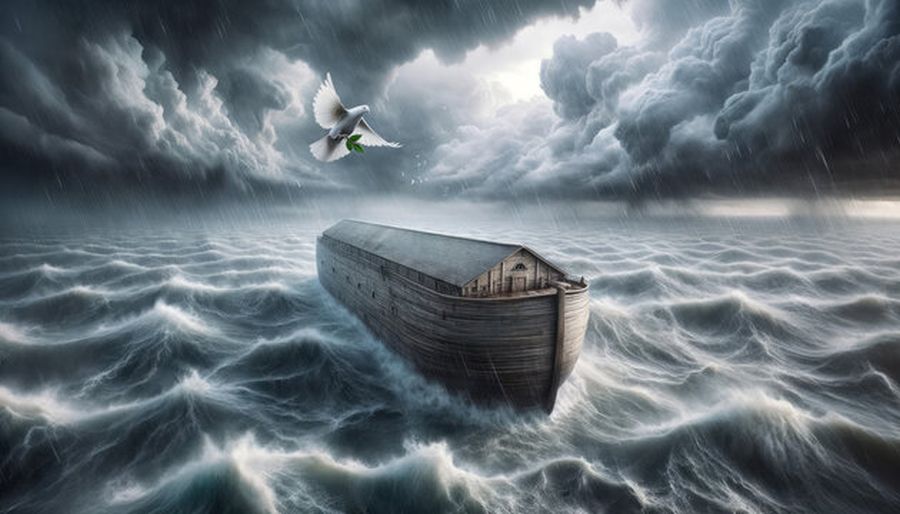
Great flood recedes
The Book of Genesis also describes the process of the flood's retreat. God caused the wind to blow over the earth and cause the waters to recede. The fountains of the abyss and the windows of heaven were shut, and the rain ceased. The floodwaters gradually receded, but it took several months for order and stability to be restored.
As the water level continues to drop, Mount Ararat and the ark parked on the top are gradually revealed. Noah patiently waited for the right moment to leave the ark. He first sent out a crow, and then a dove. At first it could not find a place to perch, but when it flew back with an olive leaf in its mouth, it showed that the earth had begun to recover.
Leaving the Ark
After about a year and ten days in the ark, God commanded Noah to come out. This command marks the end of judgment and the beginning of a new era for humanity and the Earth. Noah, his family, and the animals left the ark and entered a clean, renewed world.
The first thing Noah did after leaving the ark was to build an altar to Jehovah and sacrifice clean animals and birds. This behavior reflects Noah's gratitude and awe for God's salvation. It also emphasizes the importance of maintaining a relationship with God.
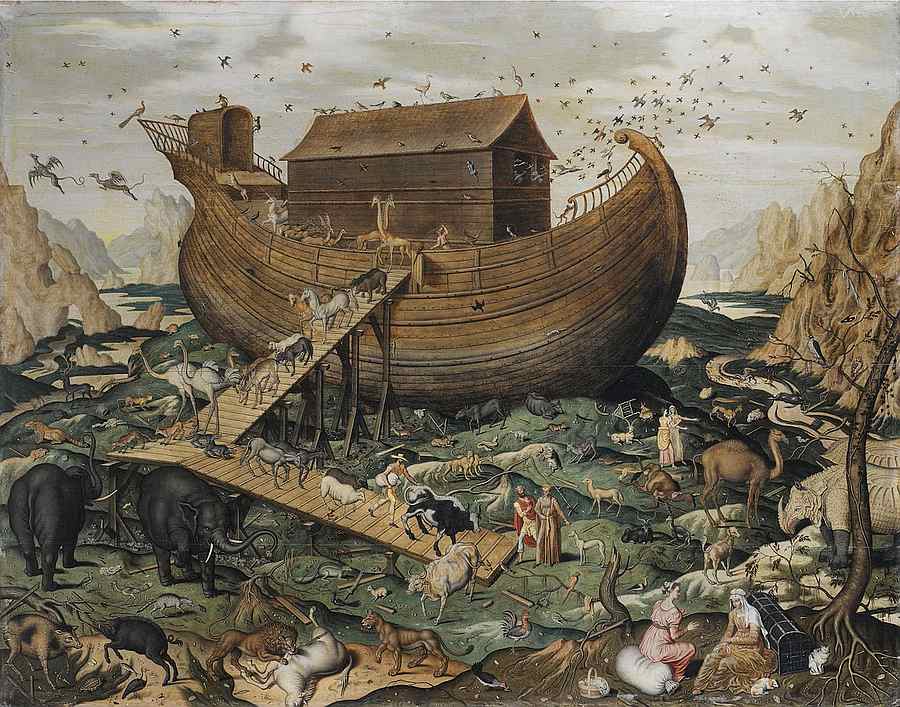
Theological Significance of the Flood Narrative
The narratives of the Flood and Noah's Ark are rich in theological significance. It emphasizes the seriousness of sin and the justice of God's judgment, showing that God will not tolerate evil indefinitely. The Flood was divine cleansing that removed corruption from the earth and provided the opportunity for a new beginning through Noah and his family.
At the same time, the flood narrative emphasizes God's mercy and grace. Noah's survival in the ark was powerful proof that God was willing to save those who were faithful to Him.
The flood also foreshadowed future acts of redemption and judgment in the biblical narrative. Just as Noah and his family were saved through the ark, believers are saved through Jesus Christ, who provided a way to escape the judgment of sin. The flood heralded the realization of God’s plan of redemption, and judgment and salvation were perfectly realized in Christ.
Floods and Human Responsibility
Records of the Flood also had implications for human responsibility. Noah set an example for believers by obediently building the ark and faithfully following God's commands. His actions demonstrate that faith is not just a matter of faith, but also a matter of obedience and trust in God’s word.
Furthermore, Noah and his descendants were given the mission to reproduce, which emphasized the importance of stewardship. Humanity is entrusted with the care and stewardship of the Earth, a responsibility that includes the physical environment as well as the moral and spiritual well-being of society.
The flood narrative also warned against complacency and moral decay. The world before the Flood is described as filled with violence and corruption, a direct result of man's rebellion against God. This reminds us that society must remain vigilant in upholding justice, justice and fidelity to God.
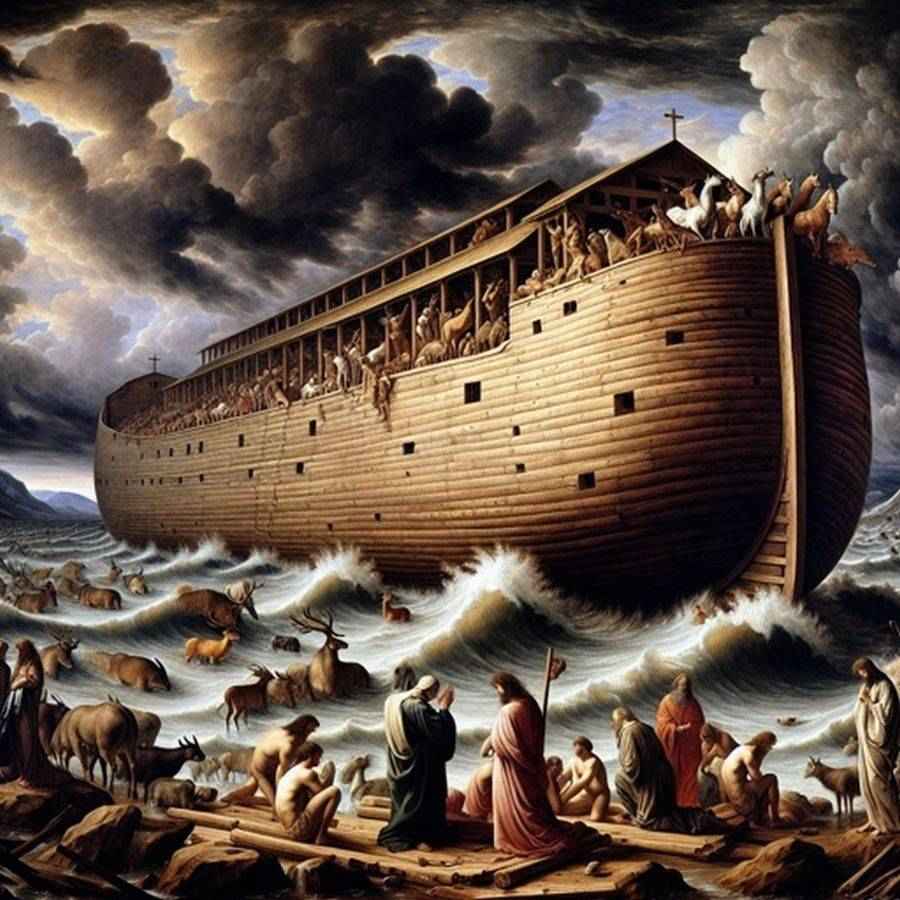
The Great Flood in Historical and Cultural Context
The accounts of the Great Flood and Noah's Ark are not only important biblical stories, but also cross-cultural and cross-generational records. Many ancient cultures had their own flood legends, indicating widespread memories of catastrophic flooding events. While the accounts vary in detail, the biblical narrative stands out for its theological depth and the moral and spiritual lessons it conveys.
The historical and cultural context of the flood narrative highlights the uniqueness of the biblical narrative. Unlike other flood myths, which often depict a capricious god acting out of spite or whim, the biblical flood was a response to moral corruption and set against the backdrop of divine justice and mercy. God's decision to save Noah and enter into a covenant with him emphasizes the relational nature of the biblical God who desires to engage with humanity in a meaningful and redemptive way.
The Great Flood and Scientific Inquiry
The Great Flood is also a hot topic of scientific inquiry. While the biblical account is primarily theological, some researchers have explored the possibility of historical and geological evidence for a massive flood event. These investigations include examination of sedimentary layers, ancient river deltas and other geological formations that may have supported a major flood.
While conclusive scientific evidence for a global flood remains a topic of debate, the biblical narrative provides a theological framework that transcends scientific explanation. The primary purpose of the Flood account is not to provide a scientific report but to convey profound truths about the nature of God, human sinfulness, and the possibility of redemption.
in conclusion
The records of the Great Flood and Noah’s Ark are powerful proofs of God’s justice, mercy, and faithfulness. It serves as a reminder of the seriousness of sin, the necessity of judgment, and the possibility of salvation for those who trust in God. The story also provides profound theological insights into the character of God and his relationship with humanity, emphasizing themes of covenant, obedience, and redemption. As a result, the Flood account remains a fundamental and enduring element of the biblical story, providing valuable lessons for generations of believers.
(Source: Christian Publishing House website)
(Translator: Bai Ding)
(Editor: Jiang Qiming)
(Source of the article: Compiled and published by New Sancai)
